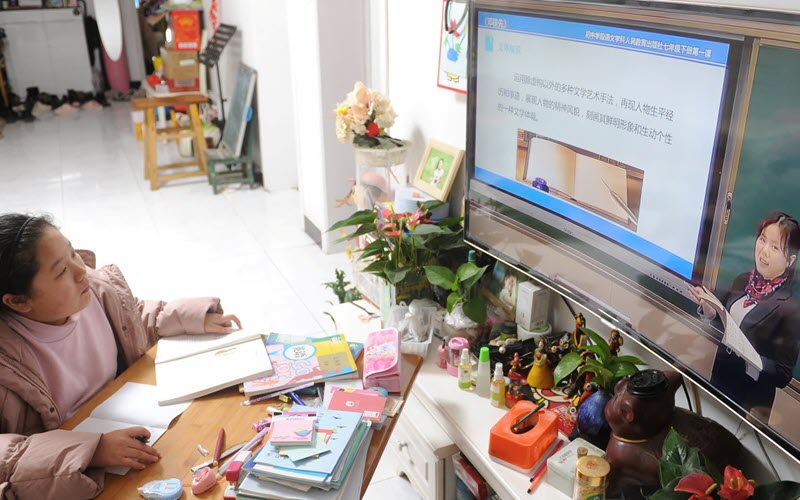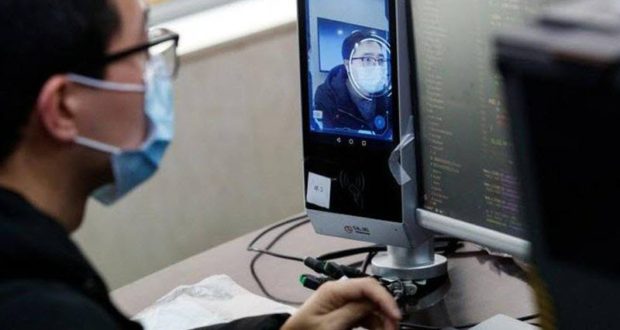- To fight coronavirus, China actively leveraged digital technologies such as artificial intelligence (AI), big data, cloud computing, blockchain, and 5G.
- Companies made their algorithms publicly available, researchers shared data and firms increased access to key videocasting tools for educators and remote workers.
COVID-19 is a major global public health challenge. Its outbreak in China presented the fastest spread, the widest scope of infections and the greatest degree of difficulty in controlling infections of any public health emergency since the founding of the People’s Republic of China in 1949.
In the battle against the outbreak, China actively leveraged digital technologies such as artificial intelligence (AI), big data, cloud computing, blockchain, and 5G, which have effectively improved the efficiency of the country’s efforts in epidemic monitoring, virus tracking, prevention, control and treatment, and resource allocation.
Here are a few of the ways information technologies were effectively leveraged:
Artificial Intelligence
In a crisis, collaboration is key. During the outbreak, a range of companies made their algorithms publicly available to improve efficiency and to support coronavirus testing and research.
Baidu Research, a world leader in AI R&D, open-sourced LinearFold (its linear-time AI algorithm), to epidemic prevention centers, gene testing institutions, and global scientific research institutions. The algorithm is an important tool for gene testing institutions, and R&D institutions during the epidemic, reducing the time taken to predict and study coronavirus’s RNA secondary structure from 55 minutes to just 27 seconds. The algorithm also improves the speed of predicting and studying coronavirus‘s RNA secondary structure by 120 times and saves the waiting time for virus detectors and researchers by two orders of magnitude With the improved algorithm comes much-improved efficiency in virus detection and diagnosis than traditional algorithm.
Additionally, Zhejiang Provincial Center for Disease Control and Prevention (Zhejiang CDC) launched an automated genome-wide testing and analysis platform. Based on the AI algorithm developed by the Alibaba DAMO Academy (a platform funded by Jack Ma for science research), the group has shortened the genetic analysis of suspected cases from several hours to half an hour and can accurately detect virus mutations.
Artificial intelligence was also leveraged in subway stations, train stations and other public places where there is a high concentration of people and a high degree of mobility. While using the traditional method of temperature measurement is time-consuming, and would increase the risk of cross-infection due to the clustering of the people, companies such as Wuhan Guide Infrared Co. Ltd put forth new temperature measurement technology based on computer vision and infrared technology. This technology made it possible to take body temperature in a contactless, reliable, and efficient manner, with the people even unaware of it. With this technology in place, those whose body temperatures exceeded the threshold could quickly and accurately be located.
Big Data
After the outbreak, big data played an important role in prediction and early warnings, analyzing the flow of people and the distribution of materials. Qihoo 360, a leading Internet company in China, released “Big Data Migration Map” this past February which users can access through mobile phones or computers to view the migration trend of the Chinese mainland from January 1, 2020 up to date. The tool became an important means of understanding and predicting changes in the epidemic situation nationwide.

Online virtual classroom at home
Cloud Computing
In the epidemic response, relatively mature cloud computing technologies became as essential as water or electricity. Alibaba Cloud made its AI computing power available to public research institutions around the world for free to accelerate the development of new pneumonia drugs and vaccines. Meanwhile, Didi offered GPU cloud computing resources and technical support for combating the novel coronavirus to domestic scientific research institutions, medical and rescue platforms, for free.
As the virus spread, the demand for cloud-based video conferencing and online teaching has skyrocketed. Various cloud service vendors have actively upgraded their functions and provided resources. For example, Youku and Ding Talk (an all-in-one platform under Alibaba Group) launched the “Attending Class at Home” program to provide students with a secure learning environment and convenient learning tools. The “Online Classroom” function, which is made available for students of universities, primary and middle schools across China without charges during the epidemic, can support millions of students to take online classes simultaneously and has also covered schools in vast rural areas.
Furthermore, other enterprise companies increased access to their tools. Tencent Meeting made unlimited-time meetings for up to 300 participants free until the end of the epidemic. WeChat Work can support the audio and video conference up to 300 participants during the epidemic. During the epidemic, the tool provided free access to stable HD video conferences are accessible from phones allowing sharing documents and screens among up to 300 participants.
Blockchain
Blockchain technology eliminates intermediary, prevents data loss and tampering and provides traceability. It can play an important role in ensuring the openness and transparency of the epidemic information and the traceability of the epidemic materials. For example, blockchain technology can be used to record epidemic information and ensure that information sources are open, transparent, and traceable, thus effectively reducing rumors.
Lianfei Technology launched the nation’s first blockchain epidemic monitoring platform, which can track the progress of COVID-19 in all provinces in real time, and register the relevant epidemic data on the chain so that the data can be traced and cannot be tampered with. The data links based on transparent monitoring and accountability are initially established to ensure that epidemic information is open and transparent.
5G + Smart Applications
5G, which has just been commercialized, has also played an important role in the epidemic prevention and control. It is mainly used in the fields of live-streaming video and telemedicine. China Mobile opened 5G base stations at Huoshenshan and Leishenshan hospitals, and realized 5G high-definition live broadcasting of the construction of these two hospitals, providing real-time views of the construction sites on a 24-hour basis for more than 20 mainstream media platforms such as People’s Daily and Xinhua News Agency. The content was also distributed by China Daily overseas simultaneously, and the number of online viewers exceeded 490 million.
In addition, the epidemic also witnessed the transition of “5G + health” from “experimental phase” to “clinical phase”. In order to make full use of the resources of experts in large cities and hospitals, the 5G + remote consultation system has been quickly implemented in many hospitals across the country. The first “remote consultation platform” of Huoshenshan Hospital allows medical experts far away in Beijing to work with front-line medical staff of Huoshenshan Hospital through remote video connections and conduct remote consultations with patients, thus further improving the efficiency and effectiveness of diagnosis and treatment.
New generation information technologies have unique advantages and can play an important role in responding to major public health challenges.
China’s practice has proven that the new-generation information technologies have unique advantages and can play an important role in responding to major public health challenges.
The COVID-19 outbreak is a common challenge faced by mankind with all countries’ interests closely intertwined. Countries continue to develop new solutions as the epidemic spreads. As it does, countries must share their learnings and work together. By doing so, they can collectively find the solutions needed to fight the virus and save lives.
–
Source: The World Economic Forum
 World Certification Institute – WCI | Global Certification Body World Certification Institute (WCI) is a global certifying body that grants credential awards to individuals as well as accredits courses of organizations.
World Certification Institute – WCI | Global Certification Body World Certification Institute (WCI) is a global certifying body that grants credential awards to individuals as well as accredits courses of organizations.




